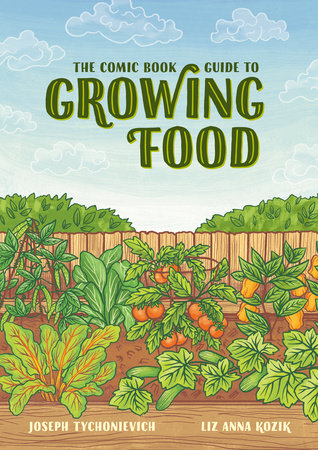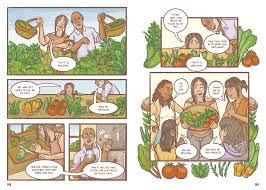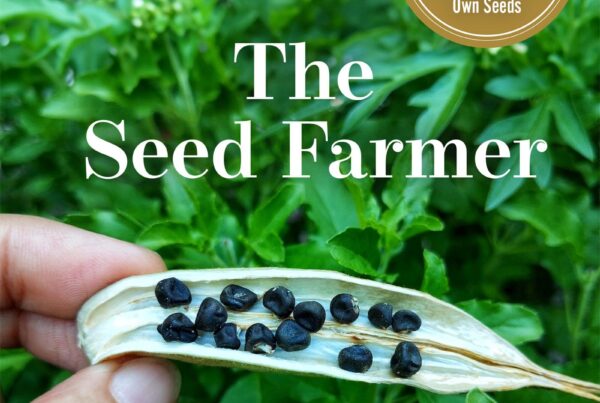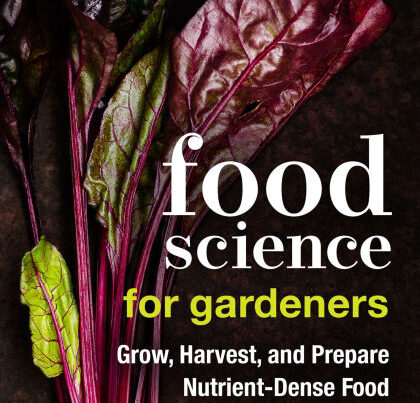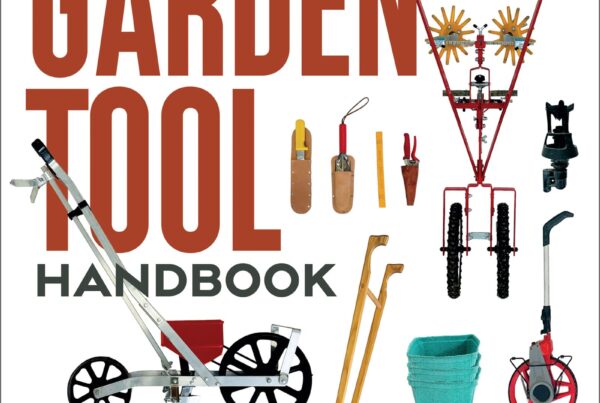Book Review: The Comic Book Guide to Growing Food: Step-by-Step Vegetable Gardening for Everyone, Joseph Tychonievich and Liz Anna Kozik, Ten Speed Press, 2021. 90 pages, color throughout, $19.99 paperback, $12.99 Kindle.
This is the first time I’ve reviewed a comic book, and it makes a refreshing change from my usual (less comic) gardening and farming reading. This small book, with text by Joseph Tychonievich and drawings by Liz Anna Kozik, is a delight. The art is wonderfully clear and realistic, even though they are not botanical drawings. The page of seven herbs makes them all distinguishable. The characters have character, keeping the reader engaged with the plot (oh, not a deliberate pun!)
This will be a great book for new gardeners (of whom there are acres, as a result of Covid-19). It will also particularly help recovering failed gardeners get a fresh, more successful start. It is perfect for visual learners, gardeners with English not their first language, and young gardeners. I have a gardening friend who says her teenager reads only graphic novels and she hopes this book will lead him to do more gardening, more enthusiastically!
It is easy to read/look at, entertaining and accurate (therefore helpful). The breezy, friendly conversations between the fictional characters, young novice gardener Mia (who writes code as a day job) and retired neighbor George, show a great example of food-growing (and computer help) as mutual aid. Gardening as a step to a more peaceful and productive future.
The book covers location, choosing crops, timing, soil testing, bed prep, buying plants, starting seeds, planting in the garden or in containers, and maintenance. This is followed by troubleshooting, harvesting, celebrating, and a “Cheat sheet of cheat sheets†and further reading. The cheat sheets throughout step us aside from the story to dive into some aspect more deeply. Come back to those when you need them.
Mia is savvy about technology, finding a compass app or a last frost date when she needs it. George has the gardening experience to share, including his ever-changing Rule #1! (Grow what you like to eat. Grow what’s easy to grow. Always grow herbs. Grow flowers. Get a soil test.)
Important points are included, such as even though organic fertilizer is best, using too much is a bad thing. Check for lead in city soils and if you find it, garden elsewhere (community garden?), grow vegetables in containers of bought-in soil, or grow flowers, not food. Why is Swiss chard easier to grow than spinach? Do you actually like radishes?
Packed in this little book, you will find how to build raised beds, how to mulch, how to choose healthy plants to buy, which crops do better from seed, the most important bugs to watch out for and more. Joseph the writer has been gardening most of his life, and Liz the artist clearly knows her vegetables too.
What is missing that I would have included? Making compost (can be an issue in city gardens, I know); more about choosing seed varieties in stores, catalogs or online; sowing seeds (like carrots) in rows rather than individual holes.
What is included that I would not have thought of? Root-pruning bought plants to encourage good outward growth. A flow chart of whether or not to water that day. Ideas for garden party snacks! The value of a smartphone as a gardening tool!
This is a real book – it has an index! (Some of my readers may know I live with people who index books, and the index is a better way to judge a book than the cover!)
Yes, this book works as a guide for new vegetable gardeners, and right now when you can’t garden with your neighbor physically at your side, this could be the next best thing. It packs a lot in a small space, which is probably what most of the readers are also hoping to do in their gardens!
For sure, the topics are simplified, but the most important bits are all there, including plenty of cautions to help prevent common mistakes, and make it more likely that readers will continue to garden and learn in the future. There are a few resources listed at the end, useful pointers of where to turn when this book can’t get into enough details, or you’ve found a bug that the authors don’t include. This book and a smartphone will help you start growing your own food successfully.
Pam Dawling is the author of two books, Sustainable Market Farming, about intensive vegetable production, and The Year-Round Hoophouse, about growing food all year in a plastic-covered greenhouse. She lives and grows at Twin Oaks Community in central Virginia. She blogs at https://www.sustainablemarketfarming.com.
Her posts are also at facebook.com/SustainableMarketFarming

